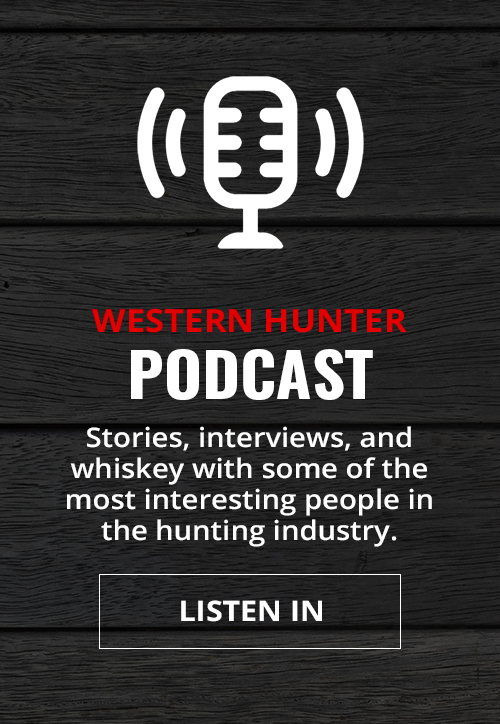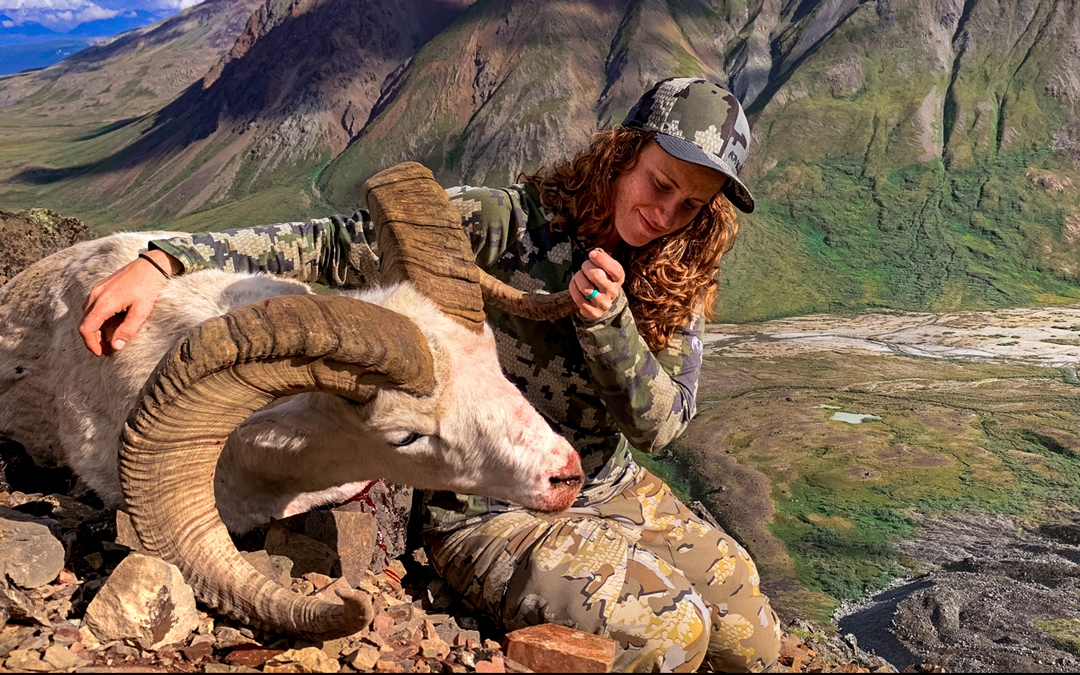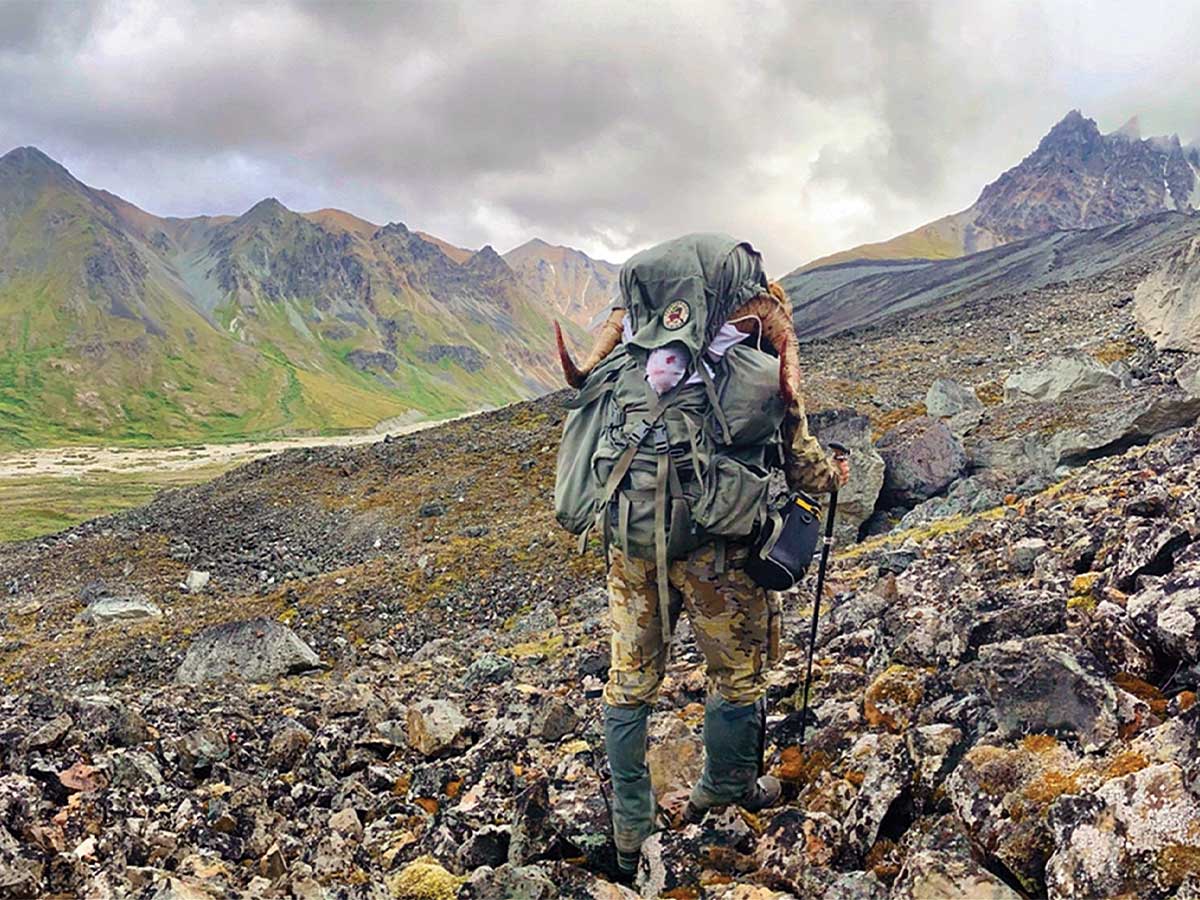
NOTICE: Certain links on this post may earn a commission for Western Hunter Magazine from Amazon or our other affiliate partners when you make a purchase. Thank you for your support.
Back to the Basics
I often find myself miles away from civilization in nasty, Alaskan alder thickets, weighed down by the worry of never finding a single animal heartbeat on the mountain. I experienced this again during several hunting situations this year, but I pressed on by focusing on three basic principles that led to filling tags, full freezers, and another incredible, successful season.
Spring Bear
Early this spring on the Alaska Peninsula, I found myself crouched among driftwood and tidal logs on the beach next to my 11-year-old daughter, belly crawling up to a brown bear munching on seaweed and clams. My pumping heartbeat drowned out the crashing waves as she steadied her rifle on a log for her first brown bear kill. At that moment, nothing mattered but the wind, the weapon, and how close we could get before the bear could see, smell, or hear us.
The brown bear inched closer as it dug and searched for more food. It had no idea we were there. I fully expected her to shoot once it came within her comfortable shooting range of 200 yards. She didn’t. My mighty hunter waited until that bear was almost on top of us. I kept whispering, “shoot, shoot now!” The wind was right, the weapon was dialed, and that bear did not know we were there.
I vividly remember the rush of that bear walking right at us, to a mere 12 yards away. It sensed something was not right, and just as the wind started to swirl, it stood up on its hind legs, hovering over us. She finally pulled the trigger on her .300 short mag and pummeled the bear right in the chest. It whirled around, went 50 yards, and fell over. Our mother-daughter bear hunt was an incredible success.
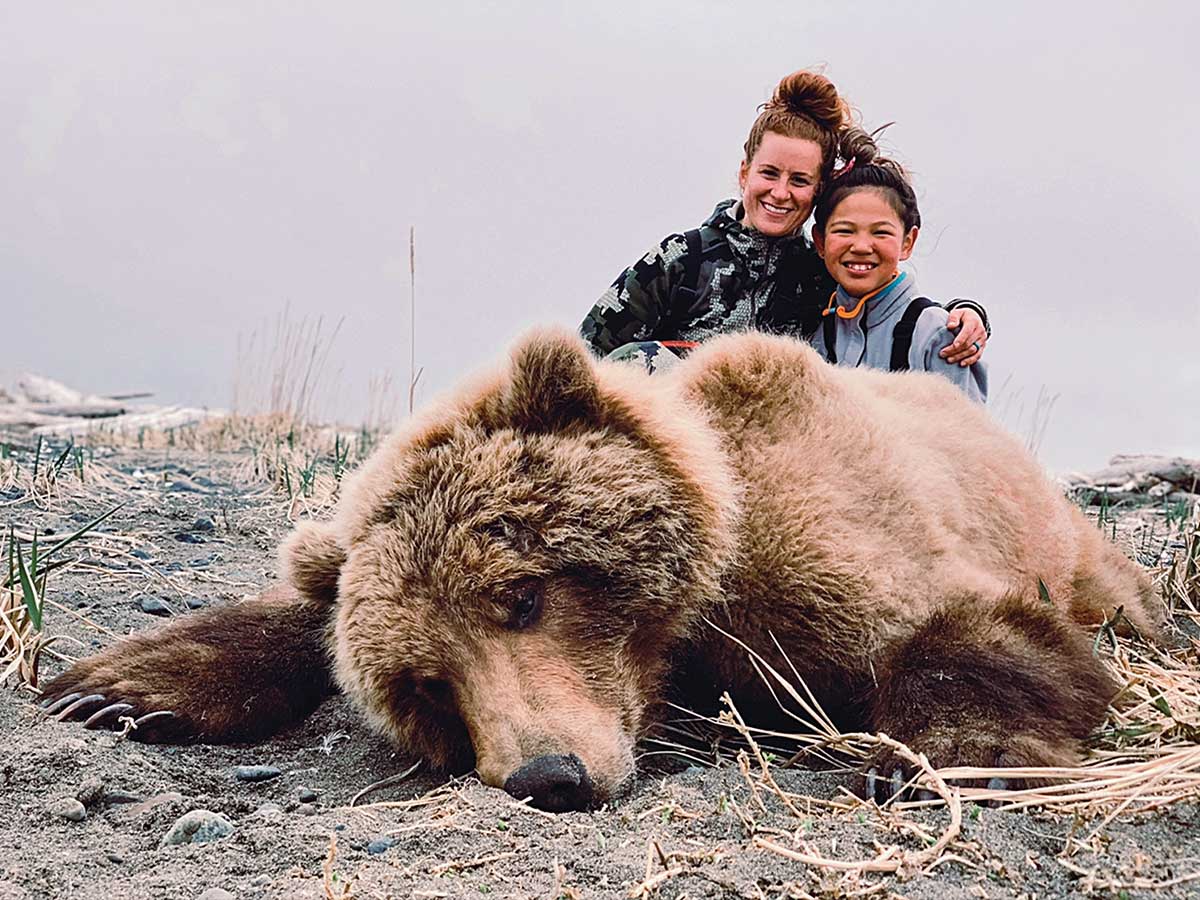
Dall Sheep
Later in the summer, I found myself scaling rock cliffs, battling alders, and aiming to avoid grizzlies in the steep terrain of the Alaska Range hunting Dall sheep. After several blown stalks due to wind and bears, I finally spotted a legal ram feeding in the sun 900 yards away in some nasty cliffs.
We ran full speed, ensuring our path kept us out of sight of this ram. We scaled shale and an eerily steep gravel slope to get in a solid shooting position, knowing the whole time I had to stay out of sight and be careful to avoid rolling any rocks to spook him. The fear of ruining this stalk was quickly replaced by sheer terror as I barely clung to a cliff outcropping. The feeling of being “cliffed out” is not an enjoyable one. The only thing keeping me on that mountain at that point were my toes and the tips of my fingers. Sweat was dripping down my face. One wrong move and I would be falling several hundred feet to the bottom of the mountain. After hanging there for what felt like an eternity, all of a sudden my foothold broke loose and my heart sunk. I acted quickly and pulled myself up by my fingers and gun to a tiny ledge before I fell.
I was now 500 yards from the ram and needed to close the distance to be within eyesight. Every step was a risk on this rocky hillside, going off of pure instinct. I shuffled around another cliff outcropping when the ram finally appeared into sight where I could get a quick, clean kill shot.
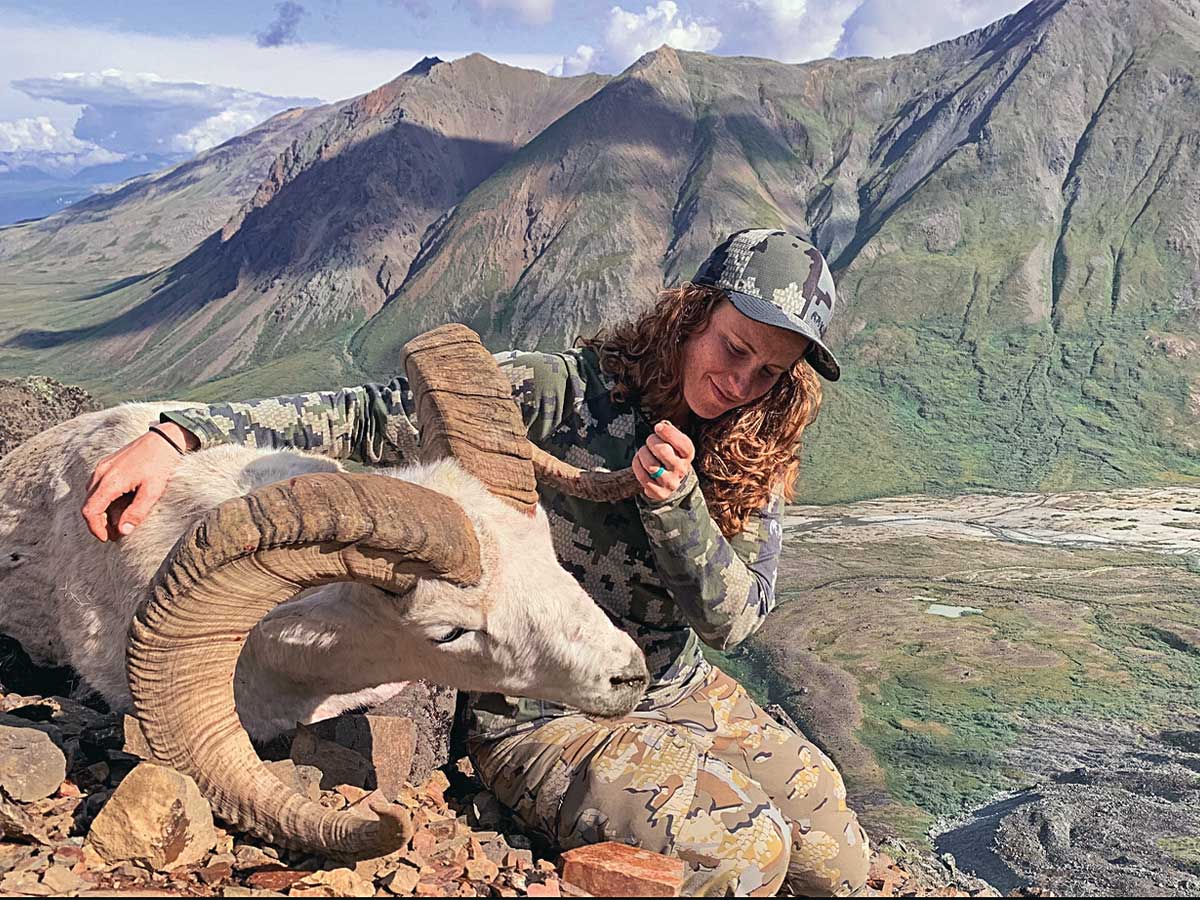
Moose
A few weeks later, my brother Trevor joined me on an Alaskan moose hunt. Moose have their own strengths which are different than those of sheep. They do not have the greatest eyesight, but they have impeccable hearing and smell. To do this hunt with archery equipment, we knew we would have to stalk bulls quietly through loud alder brush, keeping the wind in our favor at all times. We found a big bull on the first day but backed out due to swirling winds.
On the second morning of our hunt, before daylight, we hiked into the territory of the big bull we saw the evening before. Waiting for the sun to rise, we heard a grunt echo through the breeze. We rushed downwind into the only tree patch we could find. I cow-called and he came grunting right toward us while my brother nocked an arrow. At 100 yards, he stopped.
Just like elk, moose want to see something to resemble what they are hearing, and unfortunately, we had nothing. We were hidden on an open hillside in the only tree patch around. He began circling us to go downwind, and once he did, I knew it would be over. I grabbed the rifle and ran after him, dropping him in his tracks off-hand at 300 yards. He was a BIG bull moose. The work began and after a couple of days cutting and processing the moose, we headed back out with an archery moose tag still to fill.
After two days of weathering a hurricane in our tents, the weather broke and I spotted a bull two miles away from camp for my brother, so we went after him. He was with a cow and we tried pulling him away from her, but no luck. Our last-ditch effort was to sneak in with perfect wind. We closed the distance, crossed an alder canyon, waded through a river, dropped our packs, and scaled up a steep hillside to where he was feeding. We waited for the right wind and crawled up the hill to 80 yards from where we last saw him.
Trevor silently snuck up the hill and found the bull over the other side. He was slamming his rack into the alders and pawing the tundra, going berserk by his cow. Trevor, with his bow in hand, shook an alder tree. That fired him up enough to come on a string. With an arrow nocked, Trevor heard him coming through the brush directly at him, two yards away. Trevor backed up three steps and came to full draw. The bull emerged from the alders head-on at five yards, grunted, and Trevor’s arrow flung into the front of his chest. He took a few steps and slid down the hill. The pack out was a blast, we were on cloud nine with two moose down in five days!
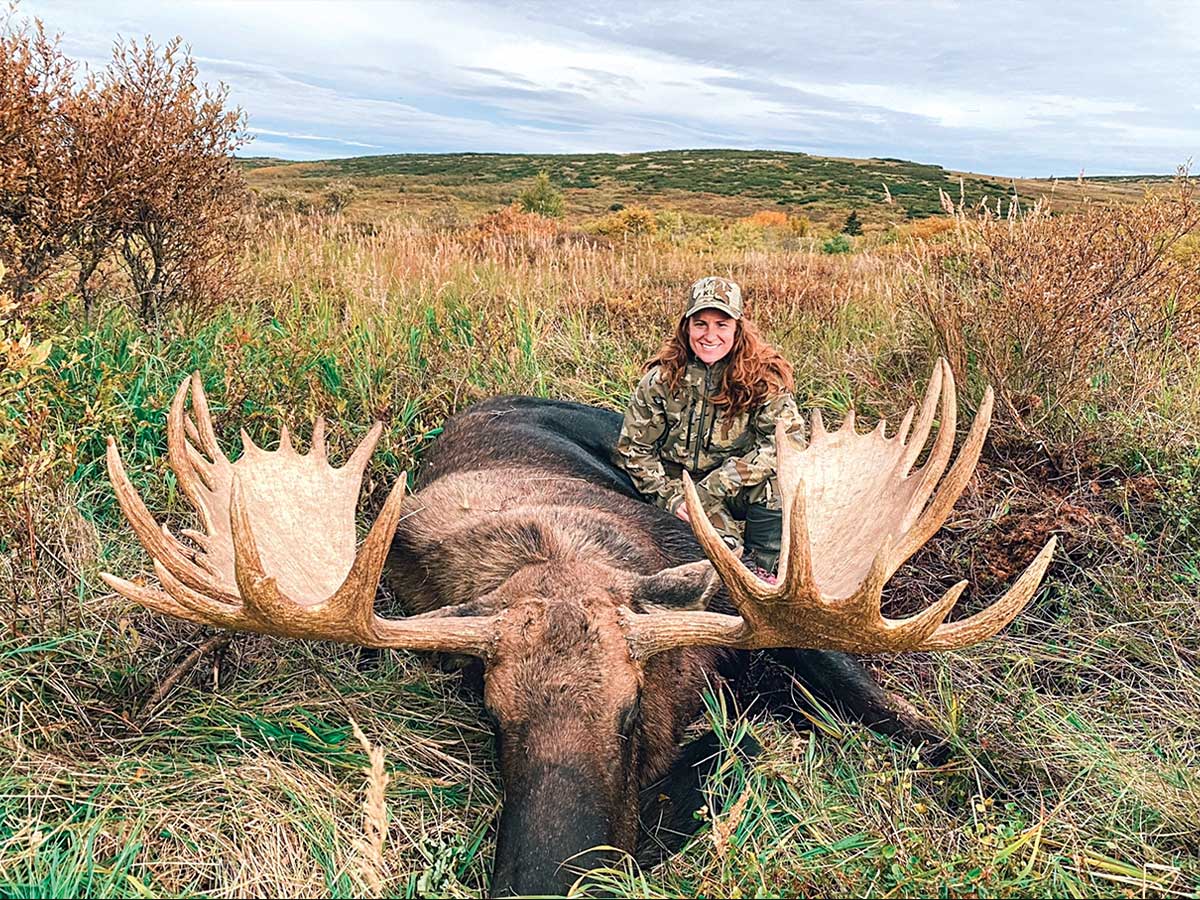
Caribou
I had one more tag to fill for the year, my caribou tag. Two days after tagging out on moose, and being fogged in for two more days, we finally found a big caribou herd. With the vast, open, endlessly flat tundra and not a bush or tree in sight, sneaking up to a herd of several hundred eyes is not easy. The wind always makes or breaks us, but this time, we used the fog to our advantage. We ran toward them every time a fog bank rolled through so they would not see us closing the distance in the flat tundra. We took our time, played it smart, and I was successful on that hunt too, with a great 400” bull. I completely tagged out this year, and I attribute it all to the following basics: my three “W’s.”
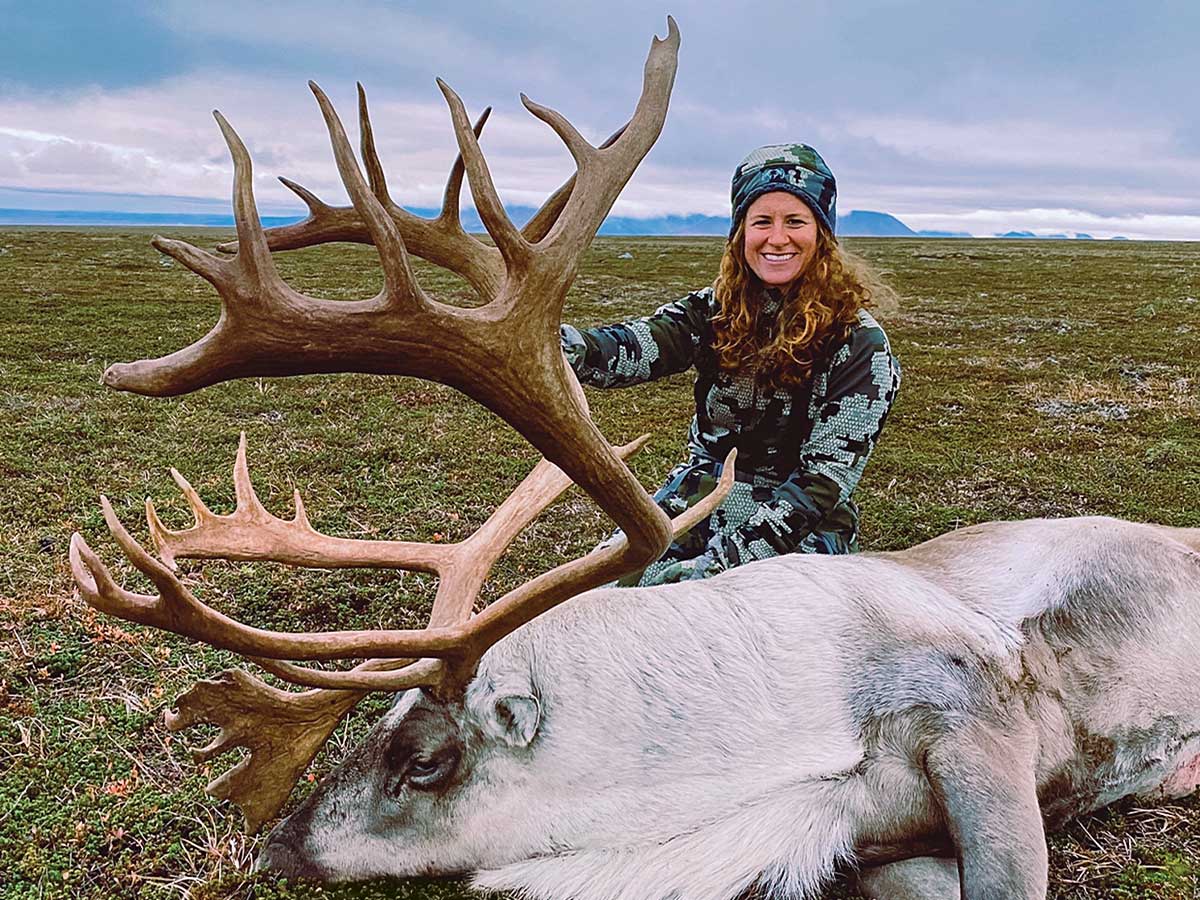
BACK TO BASICS- THE THREE W’s
In every successful hunt, three basics principles are involved: the wind, the weapons, and the wisdom.
The Wind
At the end of the day, you can have all the expensive gear and be decked out with the latest and greatest scent blockers, but when it comes down to the basics of hunting, the wind will always make or break the stalk. Every blown stalk I have had was a result of the wind switching. Every successful stalk was due to good wind. If the wind is not right, do not be afraid to back out and wait until it is.
On our spring bear hunt, we had a few blown attempts due to the wind switching mid-stalk. With our next opportunity, we positioned ourselves with the perfect wind where the bear came at us all the way to 12 yards. On our moose hunts, we backed out on both bulls during stalks when the wind was not right. I attribute both of those moose successes to checking the wind direction frequently. Keep your wind right, and capitalize when the opportunity is there.
The Weapon
If you are not dialed and confident and well-practiced with your weapon, you won’t make lethal shots. That seems like an obvious focus to have, but how many animals are wounded each year? It is a common mistake to overestimate the gear and the logistics of the hunt without spending enough time knowing your weapon.
My daughter practiced with a .300 short mag until she felt confident out to 200 yards. She would not shoot a bear over that range. She remained calm and made a perfect shot–even with a bear standing up in front of her at 12 yards. My sheep and caribou hunts were each an easy 480-yard target. I am well-versed in my weapon and have full confidence within certain ranges. I have practiced off-hand out to 350 yards, so I felt confident with the shot at my moose.
I never practice off a bench or in perfect scenarios. Whether you prefer a gun or bow, practice in the wind, lying prone, on your knees, or crouched down, and know your range limits. Be prepared for any shot scenario. Wear your weapon like a glove, and when given the opportunity, you will make lethal shots.
The Wisdom
This almost goes without saying. In order to be successful on a hunt, having the wisdom about the animal, the terrain, and when to close the distance is one of the most important aspects of the hunt.
During our bear hunt, we knew we had to be careful about scent. We walked one trail back and forth and never wandered. We spread as little scent as possible. We sat and glassed for 16 hours a day and only hiked when we were putting a stalk on a bear.
On my sheep hunt, we stayed out of sight of the rams we spotted. Sheep have incredible eyesight, even from miles away. Though the stalk on my ram took a while, the wind was right, the weapon was dialed, and he had no idea we were there. I executed the shot with confidence and I had my full-curl ram down.
On our moose hunts, we knew if we pushed these bulls and they winded us, they would be gone forever. We took our time and backed out if we felt the scenario was not right for the stalk.
For my caribou hunt, we used the fog to our advantage. We ran closer when the fog rolled in, and when it lifted, we dropped back down to the ground. We used that pattern to sneak in on a huge caribou herd in wide-open flatland.
In Conclusion
All in all, be wise and know the animal and their strengths. If you are new to hunting that species, research and study them and their patterns. Put yourself where the animals are and in their travel corridors. Be observant of your surroundings and sign. Know if they have the best eyesight, smell, or hearing. Know when to push it, when to slow down, when to back out, and when to close the distance. This comes with experience in most cases. Do what you need to do when you’re in their territory with perfect wind and a confident shot so that you can kill the animal before the animal ever knows you are there.
Hunting is a primal instinct. When we do it enough, we learn how to become the ultimate predator. Keep your wind right, know your weapon, and be wise. Success will come if you work hard, stay smart, and focus on the basics.



